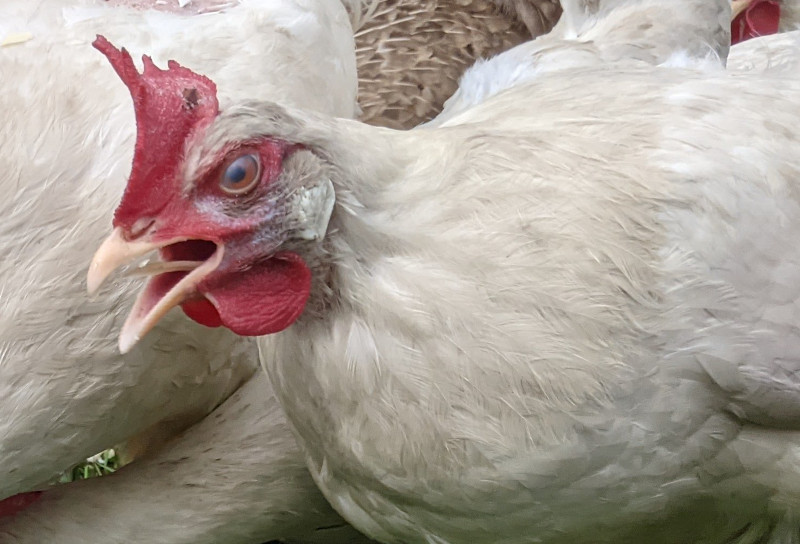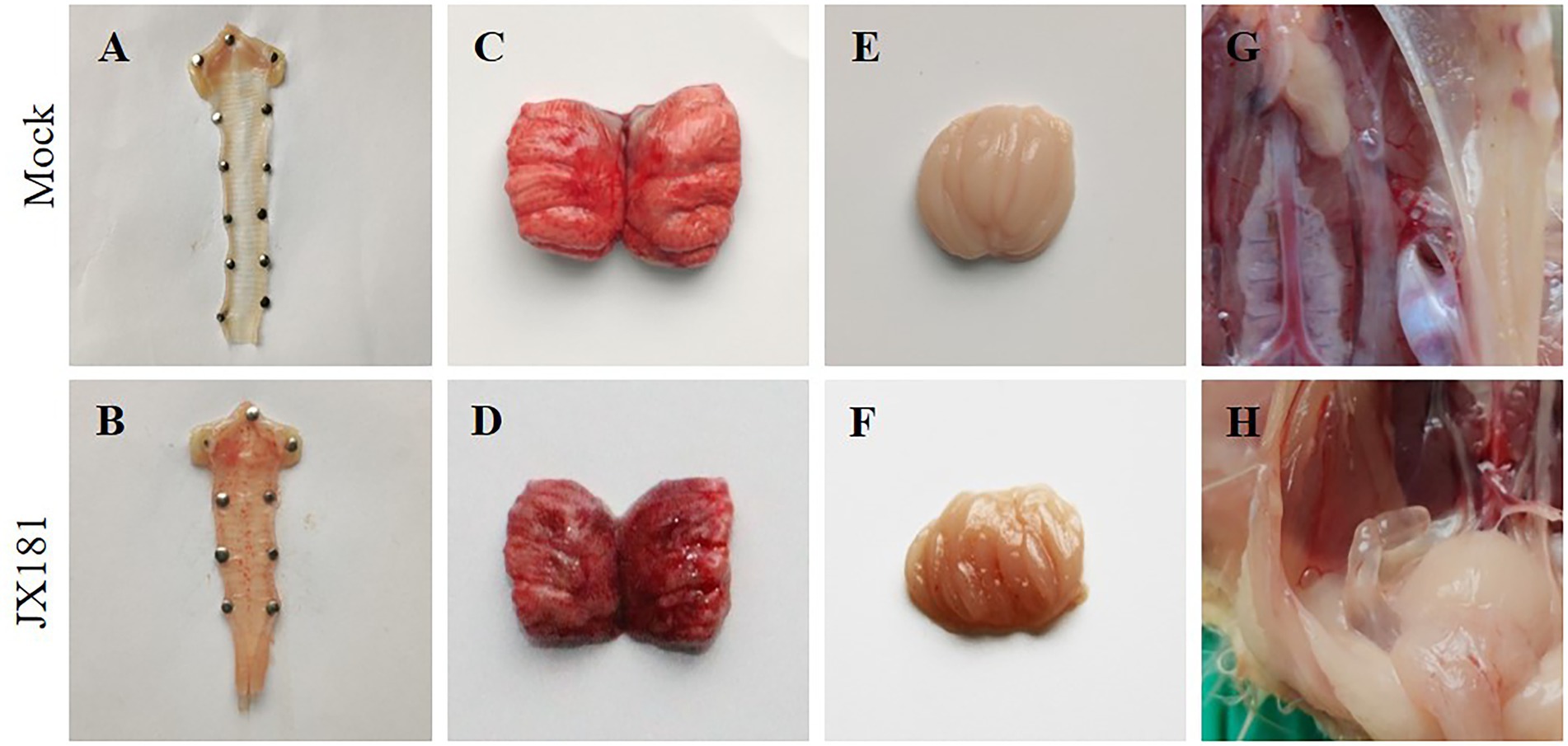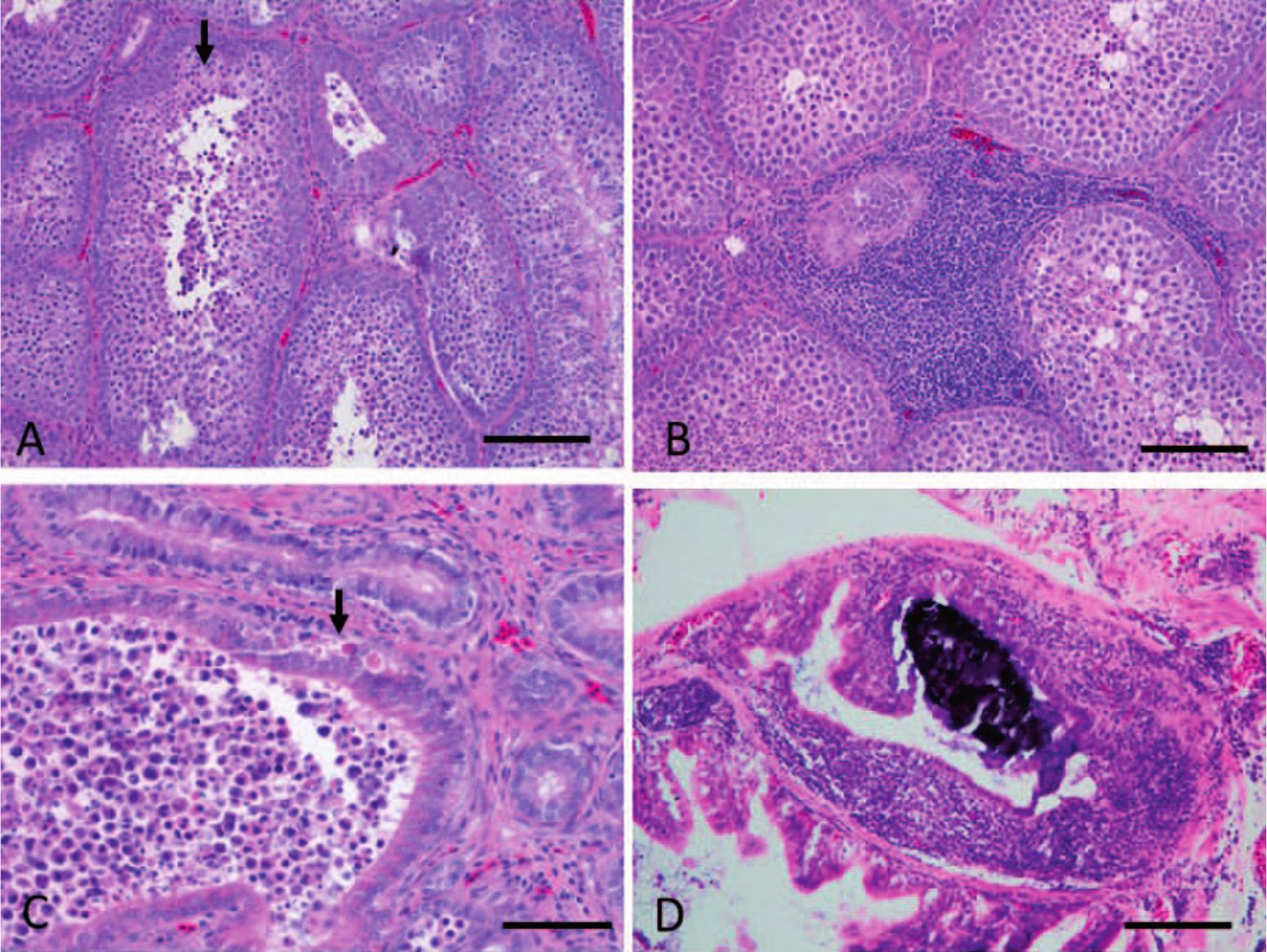Infectious bronchitis
- Infectious bronchitis (IB) is a viral d2 affecting chickens of all ages world wide
- Chickens are the only sps reported to be naturally affected
- highly infectious and contagious respiratory d2
- Great economic imp due to adverse effect on production


Etiology :
IB virus (coronavirus)
- Enveloped , pleomorphic , +ve sense ssRNA virus , pear shaped peplomers present on envelopes which lack matrix proteins.
- Vaccine and field strains of IBV may persist in caecal tonsils of intestinal tract and can be excreted in faeces for weeks or longer in clinically normal chicken
Transmission:
- Ib is highly contagious
- IP = 18 – 36 hrs
- O2 spreading through on entire flock within one or two days
a. Horizontal :-
- Aerosol transmission (sneezing)
- Contaminated organic material ,drinking water and equipment
b. Vertical :
- It has been shown to be imp
- However ,surface contamination of eggs with IB virus is a possible way by which virus can be spread in hatcheries or egg packing stations.
Forms of disease :
- Respiratory = more severe in chicks
- Nephritic = seen under 10 week of age
- Genital
- GIT [enteropathogenic form]
Pathogenesis:-
- IBV internally infects and reproduces in URT causing loss of productive calls lining sinuses and trachea.
⬇
blood[brief viremia]
⬇
Virus can be detected in kidneys , reproductive tract and caecal tonsils
- Some strains of IBV ,referred to as nephropathology, are known to cause lesions in kidneys.
- Renal damage associated with different IB stains is an increasingly important feature of IB infection especially in broilers.
- In many cases recovery occurs unless chickens are very young or air saccilims develops from secondary bacterial infections.
- Most severe clinical sign are seen in chick younger than 6 weeks of age
Clinical sign :-
- Young chickens are depressed and huddle under heat source
a. Respiratory signs :-
- Gasping
- Coughing
- Tracheal rules
- Nasal discharge
- Lacrimation and swelling

b. Urinary form :- water intake , depression , scouring .wet litter
c. Genital form :-
- Cystic dilation in oviduct
- Thin shelled misshapen egg
- Watery albumin
- Internal ovulation may occur

d. Enteropathogenic form :- DIarrhoea

PM Lesions
- lesions are found in respiratory tract and urinary tract
a. Respiratory :
- air savvusins serious or caseous exudate in trachea , nasal passage and sinus
- Bronchial mucosa are very much thickened
- Cloudy air sac which may contain yellow caseous exudate
- Pneumonia
b. Urogenital:-
- Swollen, pale kidneys, with distended tubules and ureters containing urate crystal in neuropathologic forms
- Fluid yolk material may be found in abdomen of birds in production
- Degeneration of ovary and swollen oviducts
- Junction of isthmus and magnus get atrophied


MICROSCOPIC:-
- Tracheal mucosa : edematous , loss of cilia , rounding and sloughing of epithelial cells
- Interstitial nephritis in kidneys, granular degeneration vacuolation and desquamation of tubular epithelium ( prominent in medulla ), focal areas of necrosis , ureters distended with urates
- Oviduct = decrease in height and loss of cilla from epithelial cells dilation of tabular glands
DIAGNOSIS
- Symptoms and lesions
- Isolation and identification of virus
- Tracheal organ culture
- Tmmunoperoxidate assays
- Ab detection = VNT ,ID ,immunofluorescence , ELISA
- Virus neutralization

DDX
- Newcastle disease
- Mycoplasmosis
- Vaccinal rxn
- Avian influenza
- laryngotracheitis